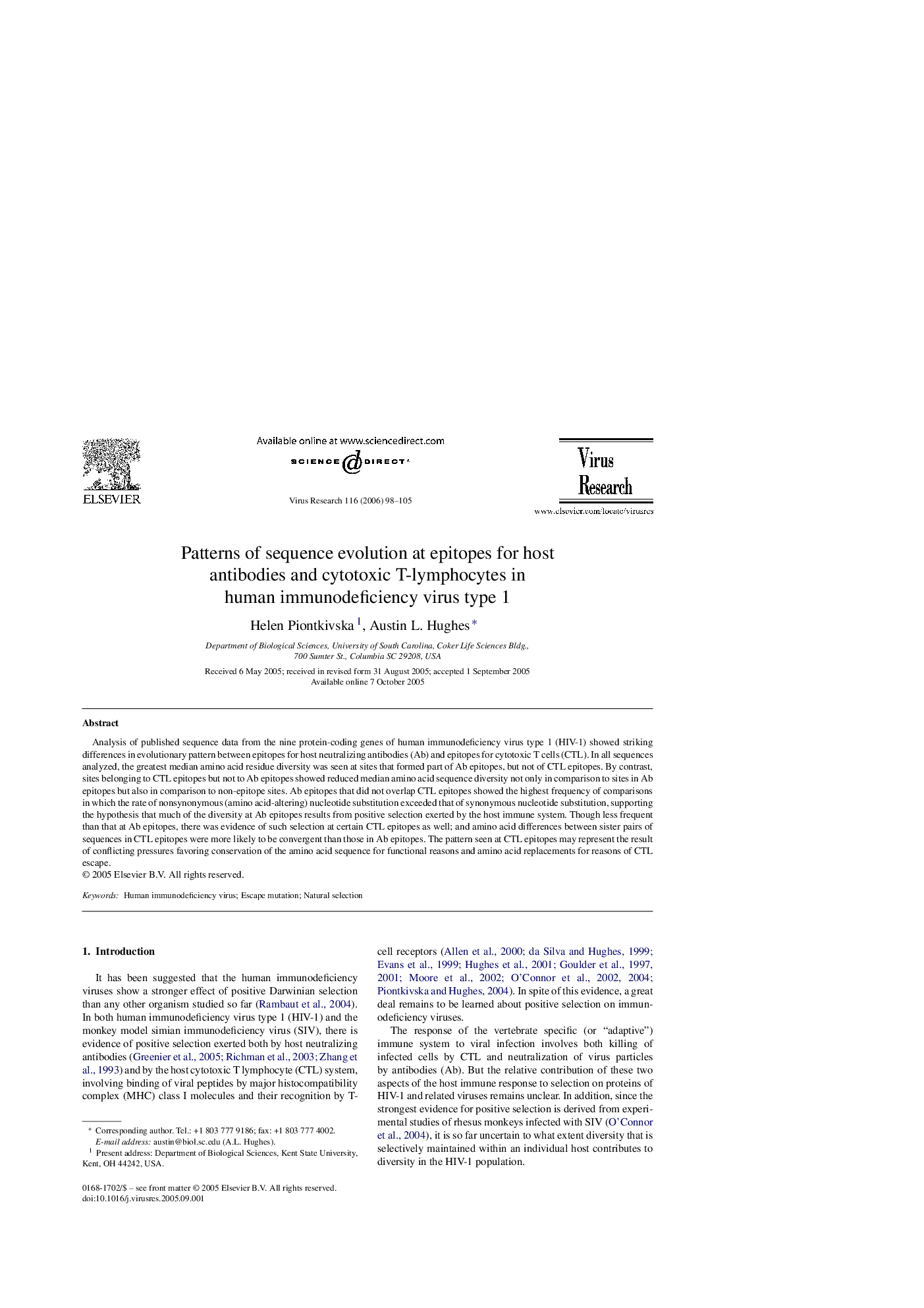| Article ID | Journal | Published Year | Pages | File Type |
|---|---|---|---|---|
| 3431450 | Virus Research | 2006 | 8 Pages |
Analysis of published sequence data from the nine protein-coding genes of human immunodeficiency virus type 1 (HIV-1) showed striking differences in evolutionary pattern between epitopes for host neutralizing antibodies (Ab) and epitopes for cytotoxic T cells (CTL). In all sequences analyzed, the greatest median amino acid residue diversity was seen at sites that formed part of Ab epitopes, but not of CTL epitopes. By contrast, sites belonging to CTL epitopes but not to Ab epitopes showed reduced median amino acid sequence diversity not only in comparison to sites in Ab epitopes but also in comparison to non-epitope sites. Ab epitopes that did not overlap CTL epitopes showed the highest frequency of comparisons in which the rate of nonsynonymous (amino acid-altering) nucleotide substitution exceeded that of synonymous nucleotide substitution, supporting the hypothesis that much of the diversity at Ab epitopes results from positive selection exerted by the host immune system. Though less frequent than that at Ab epitopes, there was evidence of such selection at certain CTL epitopes as well; and amino acid differences between sister pairs of sequences in CTL epitopes were more likely to be convergent than those in Ab epitopes. The pattern seen at CTL epitopes may represent the result of conflicting pressures favoring conservation of the amino acid sequence for functional reasons and amino acid replacements for reasons of CTL escape.
